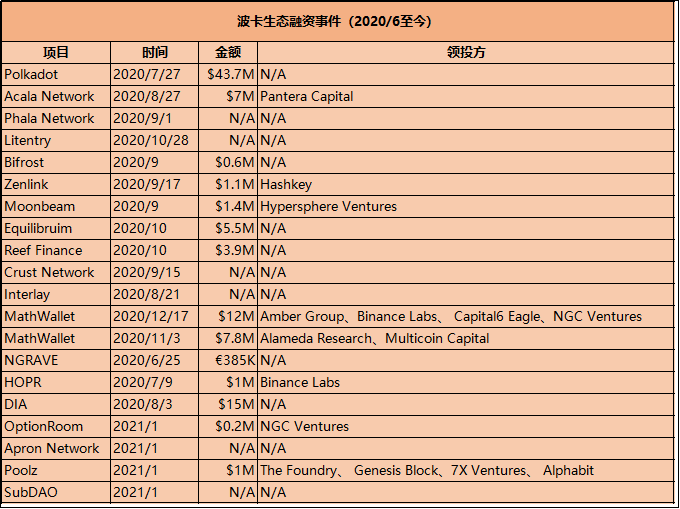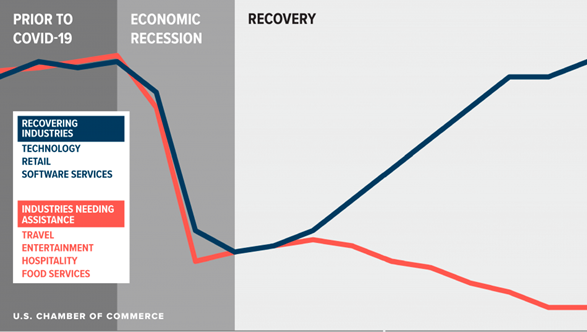An article to understand the status quo of Polkadot parachain auctions
本文约3461字,阅读全文需要约14分钟
26 projects submitted registration applications, what is the status of Rococo v1 and Polkadot parachain auctions?
The project is advancing, funds are being allocated, and the secondary market is in turmoil. Whether it is the Polkadot project itself, or the project parties participating in the parachain auction, as well as the marginal layout and participants of the ecology, they are all preparing for the "parachain slot auction" This feast gathers strength, waiting for the arrival of the highlight moment.gather momentum

Beep News incomplete statistics
In terms of project progress, according to PolkaWorld information, there are currently 100+ chains ready to be connected to Polkadot, and 60+ testnets have been launched.The cooperation news of the Polkadot ecological project has also appeared more frequently recently. Phala and Zenlink reached a cooperation to promote the cross-chain between Polkadot parachains and explore the application scenarios of private transactions; ChainX and PlatON reached a cooperation to solve the cross-chain between Kusama and Alaya, Polkadot and PlatON; Darwinia and Cere Network Reached a cooperation to provide enterprises with better products and services connected with the Polkadot ecosystem......Prepare
On January 13, the Polkadot parachain test network Rococo v1 opened for registration applications. As of writing, Plasm and Acala Network have been connected to Rococo. In addition, the official announcement of the next four batches of access projects:The second batch: Kilt, Interlay, expected to be connected this week;The third batch: Darwinia, Phala, Crust, HydraDX;The fourth batch: Bifrost, Starks Network, Clover, Zenlink;Fifth Batch: ChainX, Robonomics, Patract Hub, MathWalletAs the prelude to the auction of parachain slots, the opening of Rococo v1 registration application entrance has attracted the attention of the market, and project parties spread the news that they are one of the first batch of projects to access the Rococo parachain. From a market point of view, Rococo v1 has formed a very good "advertising effect" for the Polkadot ecological project.According to the official materials, the registration (access) of the Rococo v1 parachain follows the "first-come, first-served" rule, and whoever applies first has a greater chance of being the first to access. At present, the official has announced the approximate order of the next batch of parachains to be connected. The final access sequence of the parachains depends on the time of application submission, and may also depend on comprehensive factors such as official review.The order of access may not be equivalent to the ranking of project strength, but it can be inferred that early access projects must be the most active in paying attention to the progress of parachains and deployment of parachains. Their needs and intentions for becoming Polkadot parachains Also more obvious.Rococo v1 is used as a test network, mainly to ensure that the Kusama and Polkadot networks can run stably after the parachain goes online. Therefore, during Rococo v1, the official will create some extreme situations, such as rapid changes, updates, chain state resets, etc., to prepare for the official launch of the parachain.At present, various project parties are also making intensive preparations for the parachain slot auction.In Rococo v0 released a few months ago, the relevant parachain functions are not yet complete. In contrast, Rococo v1 has undergone overall iterations, so many project parties are doing code updates.In addition, the parameters and environments of different parachains are not the same, and the biggest feature of the Polkadot ecology is the asset and information interaction between parachains. Configuration, integration, improvement, and technical communication between different projects, it is also necessary to prepare and test the validator and collector functions, cross-chain interaction functions, etc. in advance.For the slot auction, the project party also needs to formulate an auction strategy and incentive model, do product development and protocol development for crowdloan (slot auction), and find ways to obtain community support. In addition, the project party also needs to cooperate with exchanges and others Go to the auction.The preparation of the project party also depends on their respective positioning and business needs. Acala is also preparing for this because the leading network Karura will be the first to access the Kusama parachain slot. In addition, it is also developing crowdloan participation programs and incentive plans.The positioning of Zenlink itself is to solve the problem of asset circulation between parallel chains. By integrating the DEX module into each parallel chain, the cross-chain transaction of assets is realized. Conduct docking and technical communication with relatively high-quality project parties, and do integration testing and cross-chain testing of DEX modules.There are also some project parties who clearly define their business (or part of their business) as serving other project parties. Bifrost will provide derivative tokens vsDOT and vsKSM to help other parachains solve staking liquidity problems. Konomi Network plans to provide lending services to other participants after the parachain auction starts and asset liquidity is locked.Phenomenon
Through the auction of parachain slots, we have also seen some phenomena in the Polkadot ecology, such as the unavoidable problem of uneven ecological development, and some low-quality projects are chasing the popularity of parachains or the Web3 Foundation. grant.After the Polkadot and Kusama parachains are launched, the cost of accessing the parachains is also a considerable pressure on the project side. A guest predicted at the "2030 Blockchain Innovator Cloud Summit" held by BEE News that if a parachain slot is leased for 2 years, the interest cost that the project party has to pay to users may reach about 30 million US dollars.In response to these two problems, some practitioners believe that any ecological development cannot avoid the emergence of mixed participants, and these problems will go through the process of defoaming.
K-shaped recovery, source: JP Morgan
In addition, Polkadot's card slot lease auction model means that projects in the ecosystem should develop in the direction of high-quality projects driving out low-quality projects. However, this process does place higher demands on investors.Regarding the cost of card slot auctions, Phala CEO Tong Lin believes that there will still be high-value projects that can afford this cost. For example, Phala has reserved a portion of interest rewards in the economic model. For project parties with financial pressure, Kusama is also a good choice. The card slot is practical and the cost is very low.Guo Tao, head of Zenlink China, believes that, like the continuous purification of the ecology, the cost of the card slot is also a gradual process of change. Even if the price is high at the beginning, it will eventually return to rationality under the game of various factors.Jiang Fuyao, an open contributor to the Acala global community, believes that from the perspective of economic costs, although there is a certain cost to become a parachain, it is far lower than the operation and maintenance cost of a single chain.At present, in order to ensure the security of mainstream chains, the annual cost reaches tens of millions of dollars, among which Ethereum and Bitcoin even reach billions of dollars. The cost of obtaining the same security on Polkadot is 3-5 orders of magnitude lower than that of other chains. And it is also capable of revolutionary fast, unlimited, and trustless cross-chain message transmission.According to preliminary modeling estimates by the Web3 Foundation, the opportunity cost of renting a parachain is estimated to be $100,000 to $200,000 a year. Compared with single-chain operations, the rental cost of Polkadot parachain card slots is still acceptable.The Polkadot parachain has a certain lease period, so the cost of the parachain always exists. For each Polkadot ecological project, the DOT cost of renting users is too high and uncontrollable, so Acala proposed a decentralized sovereign fund (dSWF fund) on the chain, using the network revenue surplus to reserve DOT during the parachain lease period , when the network has enough DOTs to rent parallel chain slots, Acala will achieve sustainable development of the network.For projects that want to enter the Polkadot ecology, they can also build their own products based on existing parachains. Projects including Acala also said that they will add smart contract modules, allowing project parties to build directly on their ecology Smart contracts or embedded modules to obtain the application environment on the parachain.outlook
According to the speculation of some industry insiders, the auction of Kusama parachain slots will probably take place in March this year, and the auction of Polkadot slots may be around April. There are still 2-3 months before the arrival of this bright moment, and the market is already ready to move. The prices of DOT and KSM have repeatedly hit new highs. DOT has increased by more than 3 times in the past three months, and KSM has increased by more than 2 times.This is destined to be another social experiment involving capital and technological innovation. Some investors wrote that "the auction of Polkadot card slots has reached its climax, and it is also the time point when I am ready to take profit and exit." With the entry and exit of investors, projects, and users, can the early development of Polkadot ecology bring great benefits? same narrative?